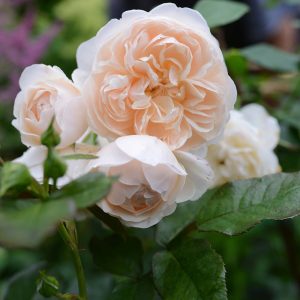Description
The charming and fragrant lilac ‘Palibin’ has earned the prestigious RHS Award of Garden Merit, making it a top choice for any garden. This slow-growing, bushy deciduous shrub boasts delicate, lilac-pink flowers that bloom in upright panicles, releasing a sweet and heady scent that will enchant anyone who passes by. With small, dark green leaves that provide a lovely backdrop to the stunning flowers, ‘Palibin’ is a great addition to any garden. Reaching a height of up to 1.5m, this lilac is a perfect choice for small gardens, adding a touch of elegance and fragrance to any space.
Key Facts
- Common Name(s):Lilac ‘Palibin’
- Hardiness:Fully hardy through most of the UK
- How big will I get? Syringa meyeri ‘Palibin’ can grow to a height of 1.5m and a spread of 1.5m.
- Did You Know That:In the language of flowers, lilacs symbolize first love, innocence, and memories?
Plant Calendar
A rough guide to how this plant will change through the year.
| Jan | Feb | Mar | Apr | May | June | July | Aug | Sept | Oct | Nov | Dec | |
| Flowering Time |  |
 |
 |
|||||||||
| Foliage Colour |  |
 |
 |
 |
 |
 |
 |
 |
 |
| J | F | M | A | M | J | J | A | S | O | N | D |
 |
 |
 |
|||||||||
 |
 |
 |
 |
 |
 |
 |
 |
 |
Care Guide

Soil Requirements
Syringa meyeri ‘Palibin’ is a versatile plant and can cope with wet or drier soils, but prefers there to be decent drainage. This plant is not tolerant of acidic soil, it requires either a neutral or alkaline soil to grow.

Best Position
Syringa meyeri ‘Palibin’ can handle either an exposed or a sheltered position and requires full sun to thrive, this consists of more than six hours of direct sunshine per day.

Maintenance
Syringa meyeri ‘Palibin’ is fairly low maintenance and doesn’t require any pruning.

Pest, Diseases and Wildlife
Syringa meyeri ‘Palibin’ can have problems with thrips, scale insects and moths. , it can be vulnerable to certain diseases such as blight, root rots and powdery mildews. It is also known to attract bees and butterflies. It is toxic to.





